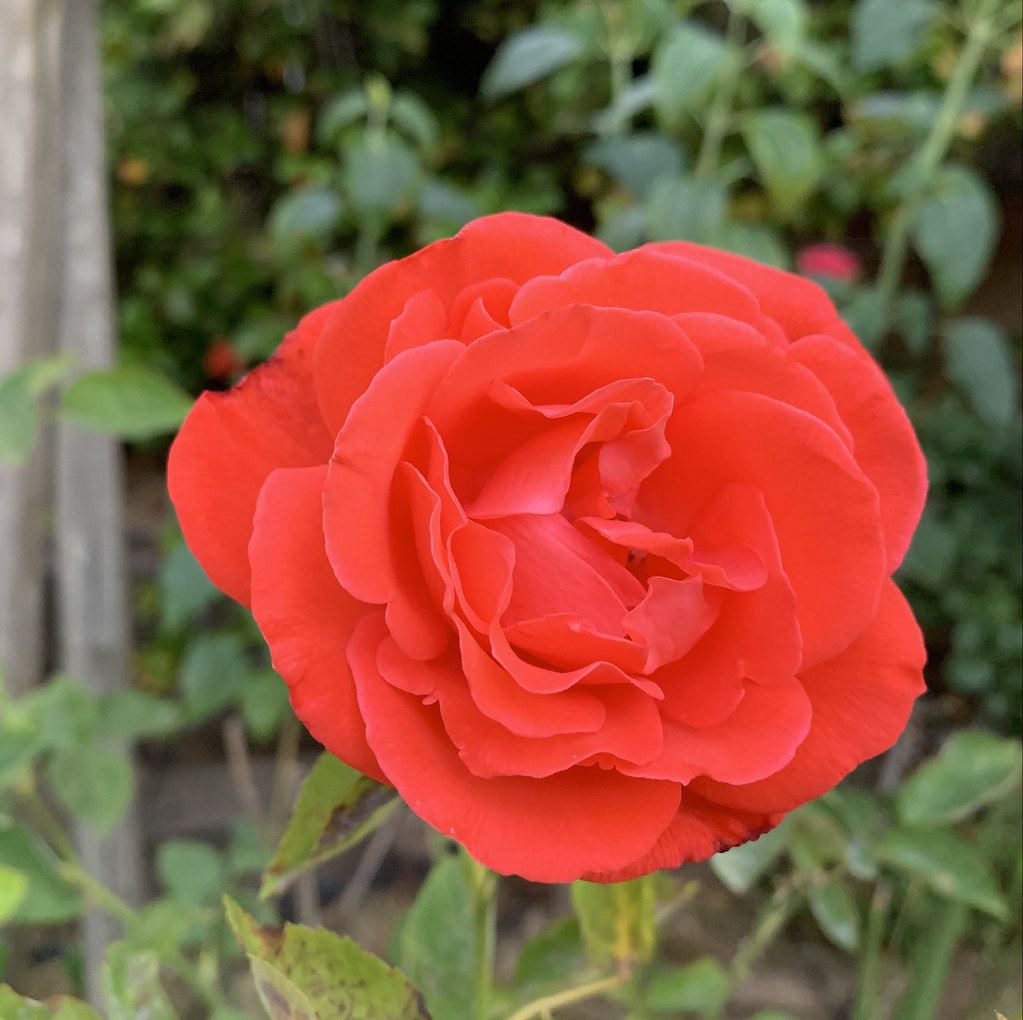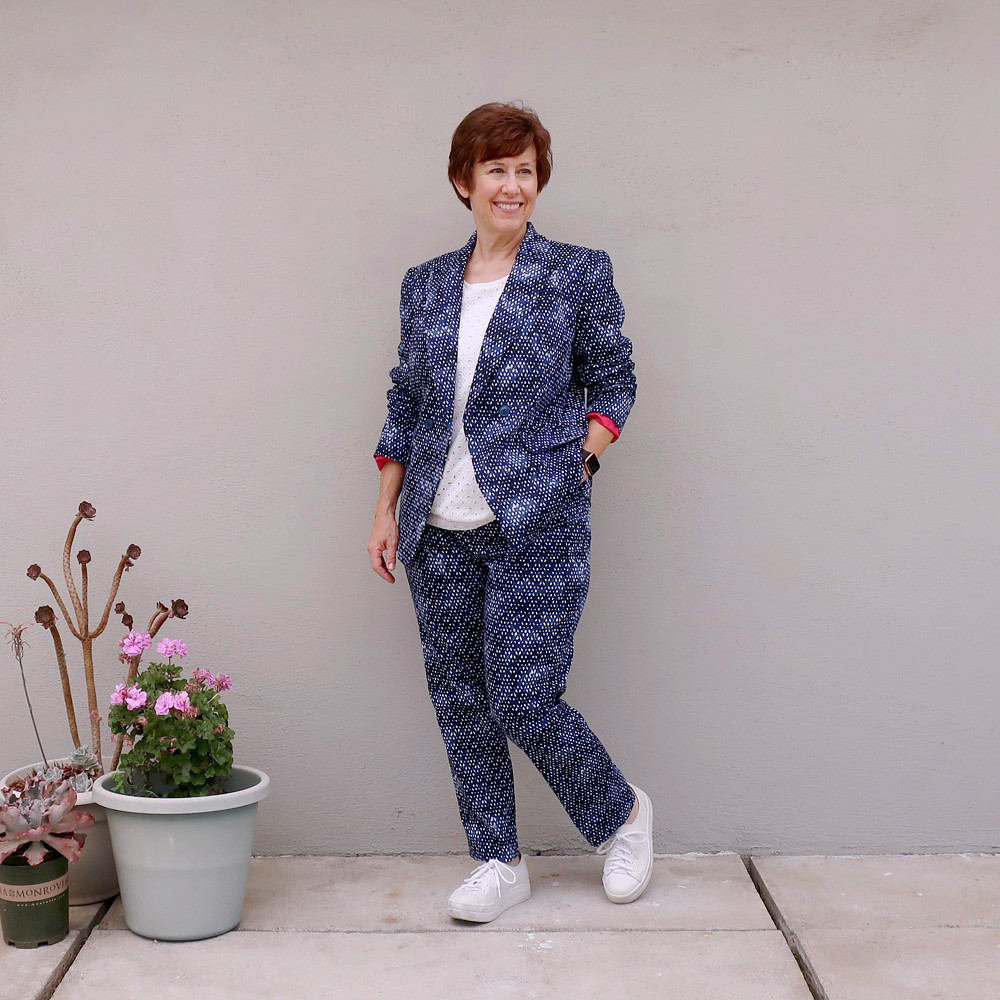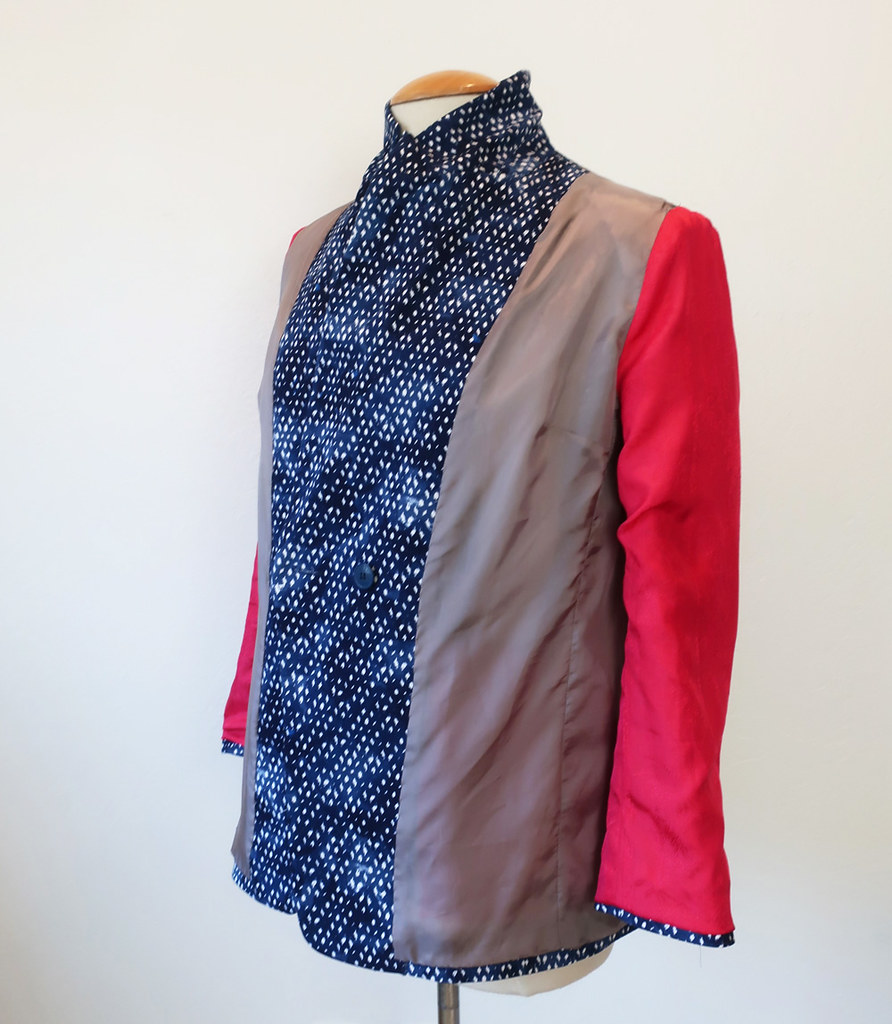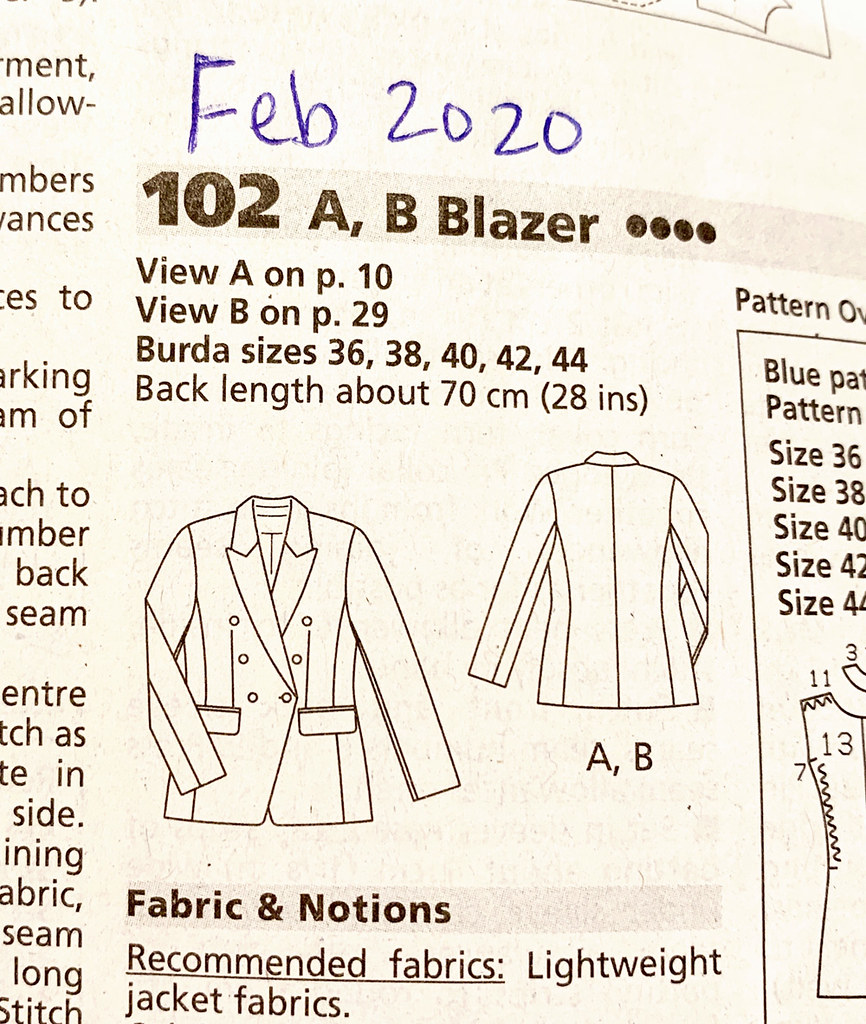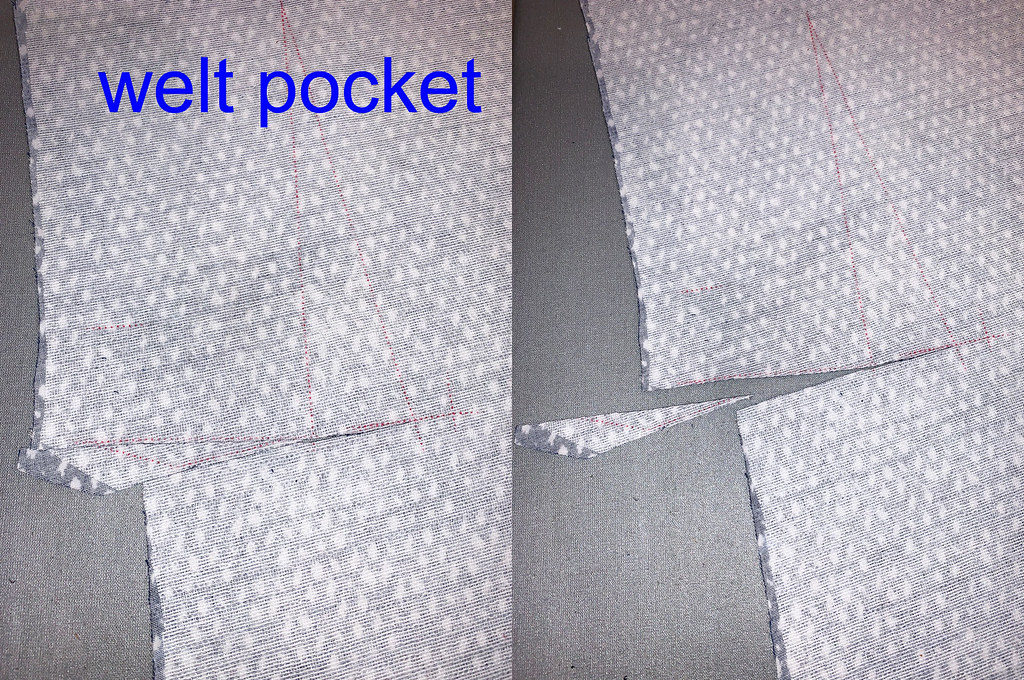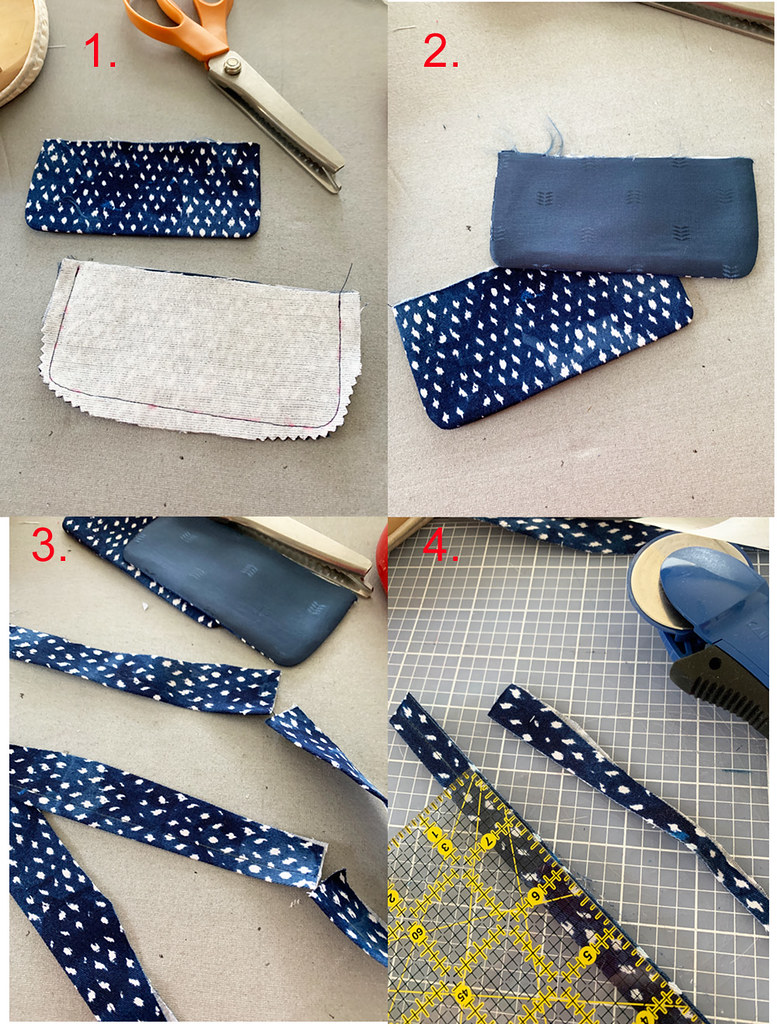As soon as it arrived I wanted to stitch it up but alas, where does one wear a nice new dress these days? I was feeling a bit weighed down by our current societal situation, and slightly exasperated with sewing silly things I don't need, and then I decided - a red dress! There is something about a red dress that just cheers me up and the inspiration was right there on the pattern envelope. Not to mention that I had this red cotton sateen in my fabric stash for several years so it seemed a good time to use it. So a red dress it was, and I love it but due to trying to outsmart myself it was a lengthy fitting journey to get here.

Of course I decided to make View B, shown on the pattern envelope on the right in black. My preference for that armhole cut is well know, but I did think the center front neckline looked a bit high. This pattern was a 3 size one, so it included sizes 12-14-16.

I thought perhaps by using the size 16 lines at the neck I could then cut it down at the neckline so I cut out a bit of a mish-mash on the sizes and figured I could shape and adjust the upper part of the dress in the fabric. Which is what I did but it probably created way more work, and a lot of pin something, try on, take off, make small adjustment and repeat until I liked the result.
Here's the technical drawing for this pattern. which shows the seaming. The upper part of the bodice is continuous with the skirt front and then there is a waist inset, with a dart forming a pleat. I love patterns with interesting seaming and construction, to me they are so much more visually interesting and much more fun to sew.


I did some pin fitting of the upper part of the bodice and decided (1) to add a bit of length to the center front so the waist seam would land in the right spot. This shifted the angle of the front and added to the horizontal width of the front neckline, so (2) I pinched that out with tiny folds to retain the width of the neckline. (3) Since I was cutting out the size 16 at the shoulder I raised the underarm about 3/4". (which I often do on sleeveless dresses, it can always be removed later but I don't like when they land too low). I used the size 16 on the side seams so I could adjust the side seam later, the markings of the pleats and dart are the same for all sizes so no change there. Also, to do this adjustment I cut off the upper part of the pattern, traced and adjusted it on tissue and then attached back to the bigger pattern piece. So just FYI - no need to trace an entire pattern. You bought it, you own it, cut it up and work with it, and if you are concerned with fit adjustments just trace the pattern pieces that will need adjustments.

All my outdoor photos are a bit out of focus, which is something I didn't notice until days later, but hopefully you can see the dress well enough.

There is a look at the dress front, you can see how the waist inset is attached to the bodice side front and then the dart is sewn in order to make the pleat.
More fitting reality. The trouble with taking an iPhone photo of the back view in the mirror is that you have to raise your arm to hold the phone and it distorts the garment :) although with a sleeveless dress it's not such a problem. I've included this picture as it included the shoulder seam pinned together (follow the green arrow). People often ask how to fit yourself, by yourself and my answer is "carefully" haha. For something like this it's almost impossible to pin the shoulders together as a seam, so I just overlap and then it's much easier to pin. Also you can pin both shoulders and often find the seam amount might be different so it's more of a custom fit. I also don't worry about the edges, if the inner neckline edge matches then I will just shave off extra at the outer edge.


Now that I'm looking at all these pictures I realize that this dress is kind of difficult to photograph. Also it looks quite wrinkly but that's cotton sateen, it's never going to be entirely smooth. This fabric is probably a bit too stiff for this pattern, looking at the envelope it seems their fabrics are more drapey, I think a crepe would be ideal. This red version was intended to be a wearable test but I like it enough to call it good for this pattern. So many other patterns calling my name right now.

I'm very happy with the fit across the upper back however I think the back waist seam is a tiny bit low. You can't tell in this photo but I think the pleats would hang better if it were shorter.
Here I've pinned up the center back with a horizontal tuck to show how that raises the waist seam. I usually do this on most patterns but looking at the pattern pieces it didn't seem necessary. Or perhaps I meant to do it when I attached the skirt but I forgot!

And in what can only be described as a very sad oversight, this dress pattern did not have pockets. Which I am not obsessed with but in a dress with smooth side seams and plenty of room for them it seems like it would have been nice.

I don't really use pockets in dresses much - what are you going to put in there? plus whatever you do put pulls too much. However for standing around and taking pictures then pockets are a must, right ???


More fitting adjustments, I did sew up the front, back, finish the shoulder seams and neckline, and then sew the side seams last with adjustments and basting along the way. This view B is finished with bias binding on the neck and armhole, which is a bit of a surprise but I decided to go with it as it made the fitting easier. The view A has an all in one facing.

Did you take ballet when you were a kid? Looking at these photos I kind of laughed as I did ballet for years and had a built in advantage of having turned out feet before I even started! And obviously still do, have the turnout I mean :)
So that 's the scoop on this Vogue pattern, a while back on Instagram I asked if anyone could guess the copyright date, and the answers were varied. Which I think goes to show that styles are constantly repeating and good ones are timeless. The answer is: © 1997, so this pattern is 23 years old. I wonder what other pattern gems are waiting for me?
Up next, more cotton sateen from the stash which I've turned into a strappy sundress, and a post on sewing things that didn't work out. Yes it happens! thankfully not often.
Soon I will have some class listings on the Hello Stitch website for virtual classes via Zoom that we will be offering. To start the first one will be more for beginners, so I will ask you to forward to your
"sewing curious" friends and push them to get started on this fantastic hobby/obsession.
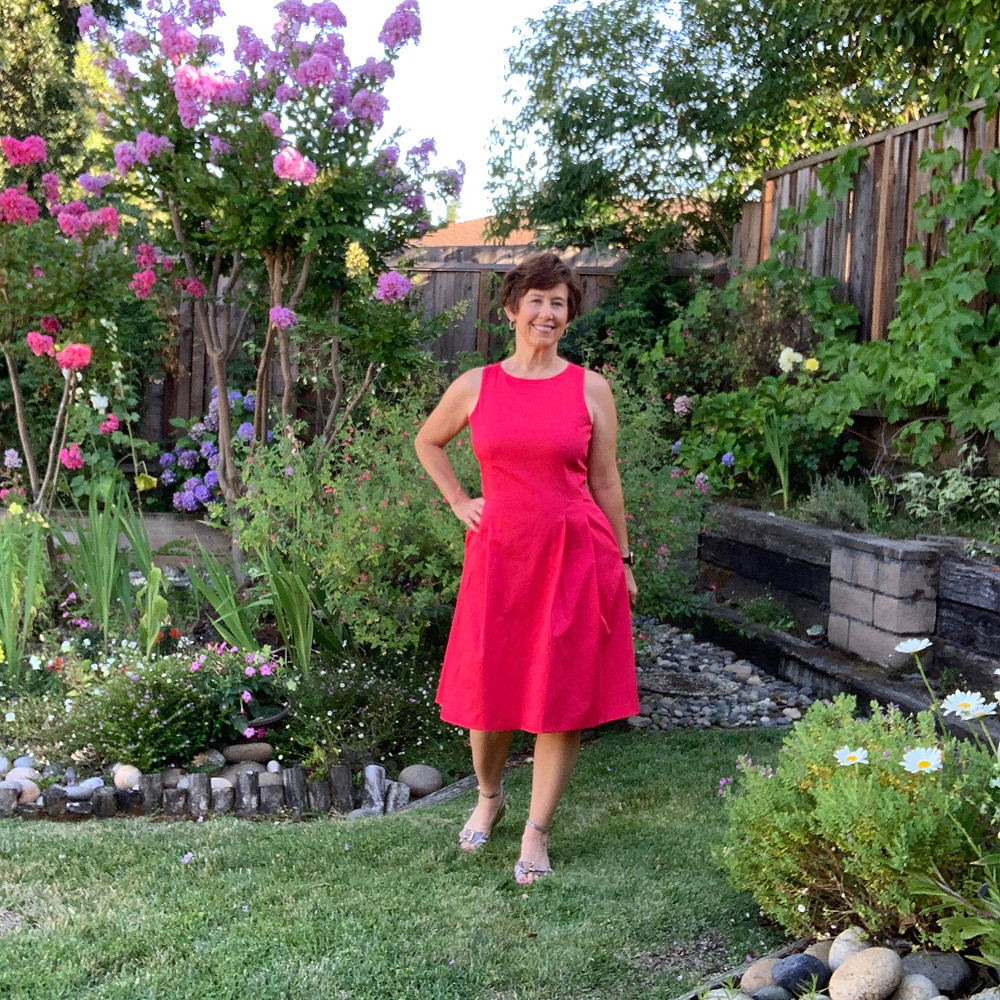
Happy Summer Sewing,
Beth
Today's garden photo, I think this rose is Tropicana. No blooms right now, as all the roses get a bit tired in the heat but it will probably put out a few more blooms in the next month.
